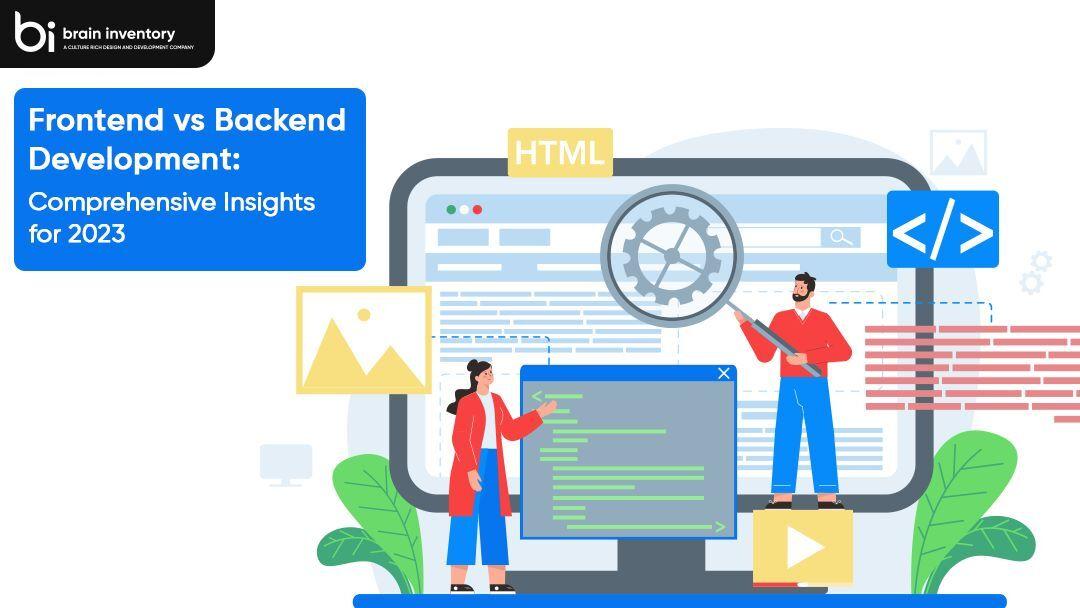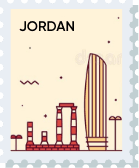Frontend vs Backend Development: Comprehensive Insights for 2023

Quick Summary: In the ever-evolving realm of web development, the dichotomy between frontend and backend development plays a pivotal role in shaping the digital landscape. As we step into 2023, understanding the nuances, trends, and challenges of frontend and backend development becomes crucial for developers, businesses, and enthusiasts alike. This comprehensive blog explores the intricacies of both domains, providing insights into their roles, technologies, and the evolving landscape in the dynamic world of custom web development.
Frontend Development: Unveiling the User Experience
Defining Frontend Development:
Frontend development, also known as client-side development, refers to the process of creating the visual and interactive elements of a website or web application that users interact with directly. It involves using a combination of programming languages, markup languages, and style sheets to build a responsive and user-friendly interface.
Key Technologies in Frontend Development:
HTML5: The structural foundation of web content.
CSS3: Styling elements to enhance visual appeal.
JavaScript: Adding interactivity and dynamic features.
Evolving Trends in Frontend Development:
Responsive Web Design: Ensuring seamless experiences across devices.
Progressive Web Apps (PWAs): Combining web and mobile app functionalities.
Single Page Applications (SPAs): Enhancing user interaction without page reloads.
WebAssembly (Wasm): Expanding frontend capabilities with near-native performance.
Challenges in Frontend Development:
Browser Compatibility: Ensuring consistent performance across different browsers.
Performance Optimization: Balancing aesthetics with efficient load times.
Security Concerns: Safeguarding against common frontend vulnerabilities.
Frameworks and Libraries:
React: A JavaScript library for building user interfaces, maintained by Facebook.
Angular: A TypeScript-based web application framework developed by Google.
Vue.js: A progressive JavaScript framework for building user interfaces.
Responsibilities and Challenges:
User Interface (UI) Design: Designing visually appealing and intuitive interfaces.
Cross-Browser Compatibility: Ensuring consistent performance across various browsers.
Responsive Design: Optimizing layouts for different devices and screen sizes.
Backend Development: Powering the Engine
Backend development, also known as server-side development, constitutes the backbone of web applications, powering the server, database, and application logic that work behind the scenes. It focuses on handling data, ensuring security, and managing the application’s core functionality. In essence, while frontend development caters to the user interface and client-side interactions, backend development drives the server-side operations crucial for the overall functioning of web applications.
Core Technologies in Backend Development:
Server-Side Languages: Such as Python, Ruby, Java, and PHP.
Databases: MySQL, PostgreSQL, MongoDB, and more.
Frameworks: Django, Ruby on Rails, Spring Boot, and Laravel.
Emerging Trends in Backend Development:
Serverless Architecture: Embracing event-driven, on-demand functionality.
Microservices: Breaking down applications into modular, independently deployable services.
GraphQL: Enhancing API efficiency and flexibility.
Challenges in Backend Development:
Scalability: Preparing for increased loads and data volumes.
Security Measures: Protecting against data breaches and unauthorized access.
Integration Complexity: Ensuring seamless communication between diverse components.
The Role of Backend Developers:
Building server infrastructure and databases.
Implementing application logic and algorithms.
Ensuring data security and efficient system performance.
Frameworks and Libraries:
Django (Python): A high-level Python web framework.
Spring Boot (Java): Simplifies Java development for creating production-ready applications.
Ruby on Rails (Ruby): A web application framework written in Ruby.
Frontend vs Backend Web Development: Bridging the Gap
Frontend and backend development are two distinct realms in web development, each with its set of responsibilities and technologies. Let’s delve into the key differences between frontend and backend development:
1. Focus and User Interaction:
Frontend:
Focus: Primarily concerned with the visual and interactive elements users experience directly.
User Interaction: Involves designing and implementing the user interface, ensuring an engaging and intuitive experience.
Backend:
Focus: Concentrates on behind-the-scenes processes, data management, and server-side operations.
User Interaction: Manages server-side logic, databases, and application functionality, which users don’t directly interact with.
2. Technologies and Languages:
Frontend:
Technologies: Utilizes HTML, CSS, and JavaScript for creating the structure, style, and interactivity of web pages.
Languages: Mainly focuses on client-side scripting languages like JavaScript.
Backend:
Technologies: Employs server-side languages such as Python, Java, Ruby, and others.
Languages: Uses languages suitable for server-side logic, data processing, and communication.
3. User Interface vs Server Logic:
Frontend:
Responsibility: Designs and implements user interfaces, ensuring a visually appealing and user-friendly presentation.
Concerns: Primarily with the look, feel, and interactivity of the application.
Backend:
Responsibility: Manages server-side logic, handles data, and ensures the application’s core functionality.
Concerns: With data storage, security, and overall application functionality.
4. Key Technologies and Tools:
Frontend:
HTML, CSS, JavaScript: Core technologies for structuring content, styling, and adding interactivity.
Frameworks: React, Angular, Vue.js for building dynamic user interfaces.
Backend:
Server-Side Languages: Python, Java, Ruby, PHP, Node.js for server-side logic.
Databases: MySQL, PostgreSQL, MongoDB for data storage and retrieval.
5. Frameworks and Libraries:
Frontend:
React, Angular, Vue.js: Popular frameworks/libraries for building dynamic and responsive user interfaces.
Backend:
Django (Python), Spring Boot (Java), Ruby on Rails (Ruby): Frameworks for simplifying backend development, providing structure and tools.
6. Responsibilities and Challenges:
Frontend:
Responsibilities: UI/UX design, cross-browser compatibility, responsive design.
Challenges: Ensuring a consistent and visually appealing experience across different devices and browsers.
Backend:
Responsibilities: Data management, security implementation, server-side logic.
Challenges: Security concerns, scalability design, integration with frontend technologies.
7. Integration and Collaboration:
Frontend and Backend:
Integration: Both frontend and backend need seamless integration for a fully functional web application.
Collaboration: Effective collaboration is crucial for a cohesive and efficient development process.
Conclusion
As we navigate the intricate world of web development in 2023, recognizing the significance of both frontend and backend development is essential. The synergy between crafting visually appealing interfaces and building robust server-side functionalities defines the success of modern digital experiences. Frontend and backend developers, armed with evolving technologies and collaborative mindsets, continue to shape the future of the web, ushering in a new era of dynamic, responsive, and feature-rich applications. Whether you find yourself on the frontend, backend, or seamlessly bridging the gap as a full-stack developer, the journey promises innovation, challenges, and boundless opportunities in the ever-evolving landscape of web development. Brain Inventory is a reputed software development company delivering complete software development services. We are a highly motivated and skilled team of developers who build your ideas into a fully functional application. We deliver the best solutions that accommodate all requirements and functionality, within your budget and timeline.

Have an idea?
Get in touch, we’d be
happy to hear from you
We are always looking out for new collaborations, whether you are a client who is passionate about a project or a talent who is interested in joining our team, our doors are always open.
locate us

India (HQ)
618, Shekhar Central, Palasia Square, A.B Road, Indore, Madhya Pradesh, 452001
+918109561401

United Kingdom
Brain Inventory, SBVS, 8 Roundhay Road, Leeds, UK, LS7 1AB
+18008209286

Canada
44 Main Street East Milton, ONCanada L9T 1N3
+4166696505

Jordan
185 Wasfi Al-Tal Street, Ammon Oasis Complex P.O Box 4724 Amman 11953 Jordan
+960770781000

USA
720 Seneca St Ste 107 Seattle, USA 98101
+1(206)6533419
if it's digital,we'll make it.
- Numetric - Online Accounting Software similar to QuickBooks
- Bloomia - Kegel exercise
- Virifi - Blockchain Powered Document Certification & Signing Platform
- Revolution Travel CRM - Custom CRM Built for Travel Agents
- Fatoura - Online Invoicing Platform
- My Fit Mantra - Your health partner
- Ocureel - Relation Building and video sharing Application